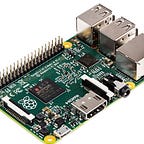The Latest Trends in AI-Powered Product Development
Introduction
Artificial Intelligence (AI) has been a game-changer across various industries, and product development is no exception. Over the past few years, AI technologies have transformed the way companies design, create, and maintain products. This article explores the latest trends in AI-powered product development.
AI in Product Design
One of the most notable applications of AI in product development is its role in design. AI tools can rapidly generate multiple design iterations based on specific parameters and user preferences. This accelerates the design phase, reduces costs, and encourages innovation.
Automated Prototyping and Testing
Another significant trend is the automation of prototyping and testing. AI algorithms can simulate real-world conditions and stress-test products virtually, minimizing the need for physical prototypes and extensive field testing. This speeds up the development cycle and ensures better product quality.
Data-Driven Development
Data is at the heart of AI development. Companies are leveraging big data to gain insights into customer preferences, market trends, and operational efficiencies. This data-driven approach helps in making informed decisions and developing products that are more in line with market needs.
Supply Chain Optimization
AI is revolutionizing supply chain management by predicting demand, optimizing inventory, and reducing waste. Machine learning models can forecast supply chain disruptions and suggest corrective actions, making the entire process more efficient and resilient.
Customization and Personalization
Personalized products are becoming the norm, thanks to AI. By analyzing user data, companies can offer highly customized products that meet individual needs and preferences. This not only enhances customer satisfaction but also builds brand loyalty.
Predictive Maintenance
Predictive maintenance powered by AI is reducing downtime and maintenance costs. By analyzing data from sensors embedded in products, AI can predict when a component is likely to fail and recommend maintenance before a breakdown occurs.
Conclusion
The integration of AI in product development is not just a trend but a necessity for staying competitive in today’s fast-paced market. From design to maintenance, AI is enabling companies to create better products more efficiently. As AI technology continues to evolve, we can expect even more innovative applications in the near future.
Further Reading
If you found this article interesting, you might also enjoy reading more on AI or exploring our other articles on product development.
